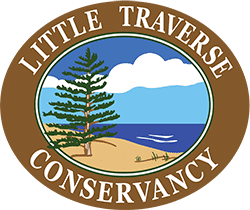
Last June, I attended a Butterfly Workshop sponsored by the Kalamazoo Nature Center/Michigan Butterfly Network on Drummond Island. The purpose of the workshop was to learn how to identify butterflies and to understand the standardized protocol. It was a mix of classroom and fieldwork education. Initially, I felt overwhelmed and thought I would never be able to identify these small, flighty beauties, but I gained some confidence by day two.
The mission of the Michigan Butterfly Network is to access the changing population status of the state’s butterfly species, evaluate the quality of Michigan’s ecosystems, and engage the public in significant citizen science research. This mission is significant for our region and seemed like a perfect match with the Little Traverse Conservancy’s educational goals.
Our 240 acres are in a conservation easement with LTC, so I approached them to map our property to collect butterfly data. They were on board, so I began by identifying five different areas: grasslands, woody wetland, developed open space, deciduous forest, and shrub wetland. I then went out six times to observe and record the various butterfly species and numbers, which were then uploaded onto the MBN site, part of the nationwide butterfly tracking system collected by citizen scientists.
Because LTC has extensive preserves and easements, this collaboration is vital to our region and relies on people being engaged in meaningful scientific research. As a new citizen scientist, I encourage others to join in this essential work. It is not only a way to contribute to the study; it gives one joy to a simple, slow walk through our world!
